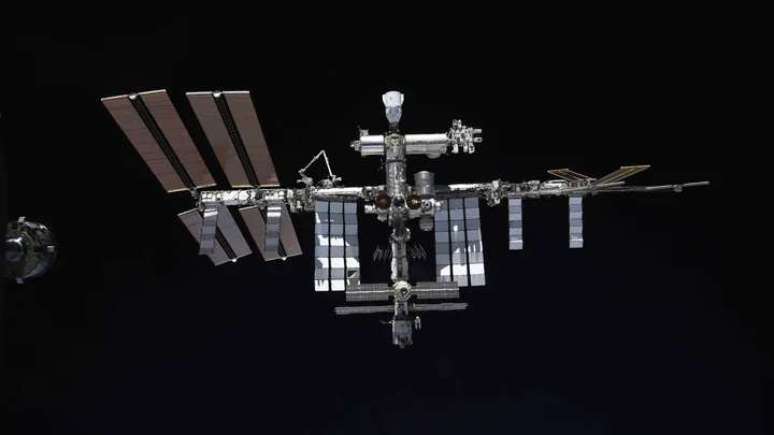Check out top space news from the week of February 18-24, 2023, and stay up-to-date on everything that matters most in the universe of astronomy!
Astronomers have detected the largest solar flare in a decade! Although it caused a coronal mass ejection, the charged particles did not reach our planet. In addition, a nearly half-ton meteor exploded in the Texas sky and surprised residents.
Check out these and other news stories below.
The 450 kg meteor that exploded in Texas
alternate angle: shook the house a bit pic.twitter.com/vv9oR34Brw
— audeez (@disdikmark) February 16, 2023
A meteor exploded in the Texas sky and scared residents with a bang and a fireball, which was also detected by the satellites of the US National Weather Service. In the video above, the house also vibrates from the impact of sound waves.
According to NASA’s Astromaterials Research and Exploration Science Division, the meteor weighed about 450 kg and measured 60 cm in diameter. The event left small meteorites on the ground, according to monitoring data.
- Read the full story at: A 1,000-pound meteor explodes in the Texas sky, rumbling
The largest solar flare in the last 10 years
The solar flare observed by scientific instruments on February 17 was the most powerful in 10 years. Researchers think the event is the result of the Sun’s activity intensifying as our star approaches solar maximum, in its 11-year cycle.
This X2.2 class explosion (one of the most energetic the Sun can produce) occurred in the sunspot region AR3229 and generated a coronal mass ejection. The last time scientists saw such an intense eruption was in 2013.
- Read the full story at: It recorded the largest solar flare in the last 10 years; clock
The Zhurong rover has been sitting on Mars for months

China’s Zhurong hasn’t appeared to move for some time, according to images from the HiRISE camera on the Mars Reconnaissance Orbiter (MRO). The “rest” period is from March to September of last year, also including registrations from February 7 of this year.
Hibernated since May 2022 to conserve solar energy, the rover may be accumulating dust on its panels, which may have depleted its battery reserves. In any case, its primary mission was accomplished after one year of operation, although it was only scheduled for three months of operation.
- Read the full story at: New photos show that the Zhurong rover has been stationary on Mars for months
The launch of the rescue ship to the ISS

Roscosmos, the Russian space agency, has launched a Soyuz MS-23 spacecraft towards the International Space Station for the “rescue” mission of the cosmonauts left without means of transport to return to Earth. The spacecraft that is supposed to perform this function has sustained damage and cannot be used to bring the Russians back.
That flight has no crew on board, but will carry supplies and a teddy bear to the space station. The “crew member” will act as a microgravity indicator. As of this writing, the spacecraft had not yet docked with the orbital laboratory.
- Read the full story at: Russia anticipates the launch of spacecraft to “rescue” astronauts on the ISS / Russia launches Soyuz spacecraft to rescue astronauts on ISS
The difficulty of rovers in finding life on Mars

There is a lot of effort to find any sign that there was life in the distant past on Mars, through rovers like Perseverance. However, a new study shows that perhaps robots exploring Mars are now unable to properly assess potential evidence of life. The problem would be the limitations of the scientific instruments on board the rovers.
The conclusion came after research in a region similar to Mars, where there are microorganisms of indeterminate classification, called the “dark microbiome”, which scientists do not yet know what it is and the rovers are unable to detect with current instruments.
- Read the full story at: Rovers may not be ready to find life on Mars
The new technique to find Planet 9

A new approach could help find Planet 9, which astronomers have been searching for since 2016, when it was first proposed to explain the orbit of a group of objects in the Kuiper Belt. Unfortunately, if it does exist, it doesn’t get enough light from the Sun to be seen with telescopes.
The new strategy is to search the world for moons, which can be done using weak radio waves. That is, if the planet really has moons, they must heat up due to the gravitational energy that the smaller body acquires when it is attracted to the larger one.
- Read the full story at: Planet 9 can finally be found, if it has moons
Supermassive black holes on a collision course

Two different pairs of merging dwarf galaxies could help astronomers find answers about galactic evolution and supermassive black holes in their cores.
The research revealed the radiation emitted by the activity of these black holes (pink/magenta lights in the images above), revealing that they are about to crash into each other. These are the most advanced phase fusion processes ever encountered.
- Read the full story at: Two pairs of supermassive black holes are about to collide
Trending on Canaltech:
- What was the metal ball that washed up on the beach in Japan?
- Alzheimer’s disease linked to fructose in the brain
- Microsoft recommends installing Windows 11 on incompatible PCs
- What’s better: a car with a 3 or 4 cylinder engine?
- Quadruped family: Turks walking on all fours stir controversy in science
- The 10 deadliest diseases in the world
Source: Terra
Rose James is a Gossipify movie and series reviewer known for her in-depth analysis and unique perspective on the latest releases. With a background in film studies, she provides engaging and informative reviews, and keeps readers up to date with industry trends and emerging talents.






